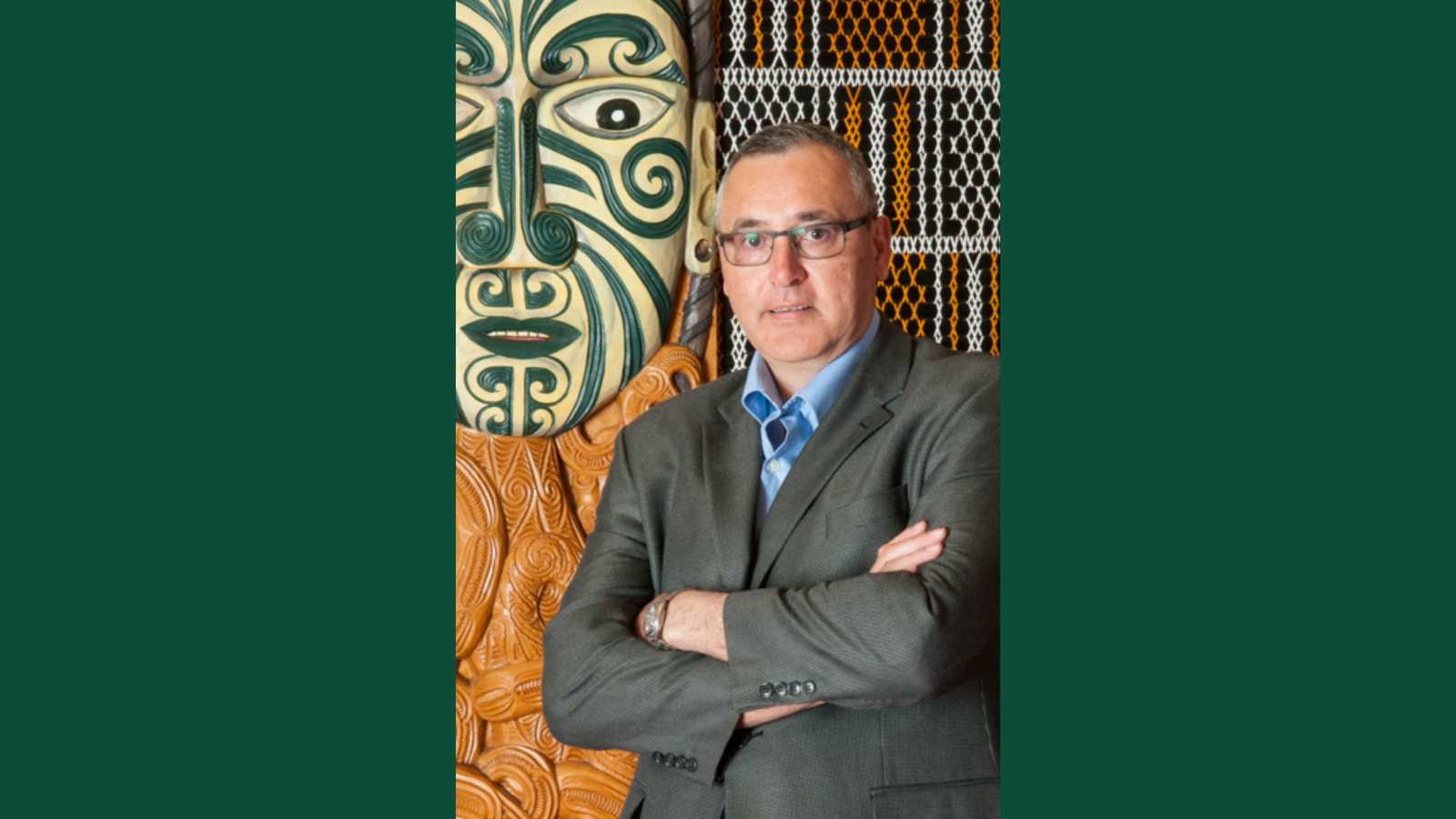Māori studies professor recognised for four decades of teaching
Professor Peter Adds from Te Kawa ā Maui—School of Māori Studies recently celebrated 40 years of teaching at Te Herenga Waka—Victoria University of Wellington.

Professor Adds joined the University on 6 June 1984, initially on a one-year contract as a junior lecturer. “I didn’t even apply for the job,” he recalls.
“I had just finished my degree in Archaeology in Auckland, and a friend of my PhD supervisor, Prof Hirini Moko Mead, asked if I might be available to teach Māori studies for a year in Wellington. I was actually planning to take off overseas, I had no intention of becoming an academic in any shape or form.”
At the time, Professor Adds was only one of two Māori people in Aotearoa New Zealand who had studied and practised archaeology. After his contract was up, Professor Adds found himself staying on to teach at the University permanently.
Reflecting on his forty-year commitment to the University, Professor Adds says he had always known that being an academic was a good job. “Although I had never done any prior teaching, I discovered I liked teaching, and I liked the students.
“Being an academic, particularly in the then Department of Māori Studies was a fantastic gig, and alongside that you get to undertake research and work on things you’re interested in.”
Professor Adds’ own research focus spans across Māori heritage, history, culture, and archaeology, as well as Te Tiriti o Waitangi, and treaty settlements. He has also contributed to and managed the production of numerous publications in these areas.
Outside of the lecture theatre, Professor Adds was one of the leaders in the Taranaki Treaty claim and then as a Claim Negotiator for Te Ātiawa ki Taranaki in their treaty negotiations, a process which lasted, in total, from 1999–2014. “It took up a lot of my time, and was incredibly challenging both in the work, and in how the public treated us. It was difficult, but ultimately rewarding as we eventually did get a settlement.”
A standout moment for Professor Adds, is teaching three generations of students, having taught the grandparents, parents, and now the children/grandchildren from several different families. “It’s not unusual for me to teach the children of past students but teaching grandkids really empahsises how long you’ve been around,” he says. “Luckily I haven’t made it to great-grandchildren yet.”
As for what's different since he started, he says, “the campus itself has changed hugely, and definitely looks a lot better. I arrived at a time when they were planning the new marae and the wharenui that opened in 1986. I got to be involved with the organisation of that building, and editing the publication for it.”
At the same time as the wharenui opening, Professor Adds and his colleagues were working behind the scenes to create and develop the Tohu Māoritanga programme. “The Māori studies programme at the time was quite small. We had a small team, and we got a lot of work done.”
The current Māori studies programmes at Te Herenga Waka reflect the work that Professor Adds and his colleagues have done, ensuring that the courses and teaching provide students with a solid grounding in Māoritanga and Māori issues to allow the them to eventually contribute positively to Māori development initiatives.
Professor Adds says the one thing that has remained consistent over this time is “the situation for our Māori students,” he says. “The compulsory education system has largely failed Māori students, and we are often faced with the dilemma of having to re-inject interest, enthusiasm and educational success into their university experience. We tend to spend a lot of time trying to take care of and mentor those students, making sure they’re getting a solid education and a successful qualification outcome.”
In December this year, the University’s Living Pā site will open, exactly 38 years after the carved house, Te Tumu Herenga Waka opened in 1986, a date Professor Adds says was chosen deliberately. “The building is amazing, and will be an incredibly special part of Te Herenga Waka.”
